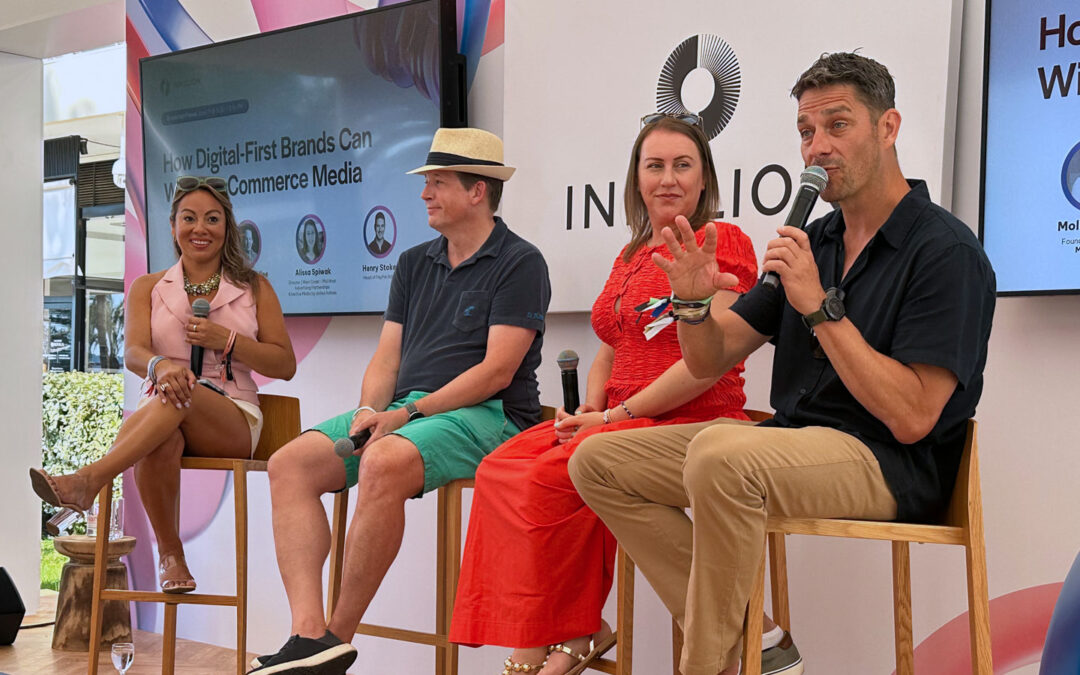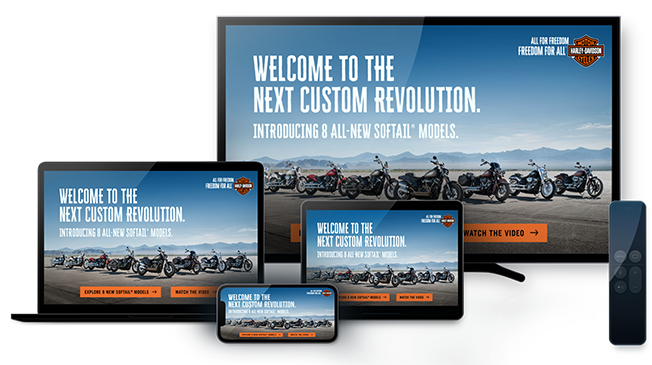Today’s Biggest B2B Marketer Challenges

Let’s say you’re trying to sell enterprise software to CTOs. How do you get your brand in front of them outside of cold pitches and industry conference sponsorships? Could you even run your creative during football games? Until recently, you couldn’t. But now that’s all changing.
Today’s tools for marketers were largely built for what one might call “Big Consumer,” as Infillion CMO and CRO Laurel Rossi calls it. In other words, they were designed for reaching wide demographics and large audiences – so how can B2B marketers work effectively with these same tools? In a panel at the POSSIBLE conference in Miami called “Vertical Ads: How B2B Is Bending The Ecosystem Around Its Needs,” Rossi, who moderated, asked a slate of B2B leaders what they see as the biggest challenges – as well as the most promising solutions.
The challenges, as the panelists illustrated:
Reaching narrow audiences. “You’re dealing with so many small audiences,” said Dan Rosenberg, co-founder and CEO of Octane11. “To find all those individual audiences, titles, job functions, and connect them across all the different places you find them, to make a unified picture…That, I think, is the biggest challenge.”
Dealing with long sales cycles and a disjointed purchase funnel. The sales process in B2B can take “quarters or years,” according to Rosenberg. That can make it difficult to track. Plus, historically B2B marketing has operated at opposite ends of the purchase funnel with very little in between. There’s brand awareness, and then there’s pure lead driving. Jatinder Singh, global head of data and AI at Accenture Song, called this “the bifurcation between brand and demand.”
Software that wasn’t built for them. Out of the dozens of tech tools for marketers out there, few explicitly pitch themselves to B2B marketers or even “Most of the AI solutions in advertising weren’t built with B2B in mind, and are actually sort of opposite to what B2B is trying to do,” said Adam Heimlich, CEO of Chalice.ai.
Extreme fragmentation and lack of transparency. A frustration with non-actionable data and tools that don’t talk to each other, of course, doesn’t only plague B2B marketers. But especially with the “bifurcation” that Singh mentioned, that gulf in the sales cycle can be tough to bridge with incompatible tools. “Let’s be honest, it’s really hard,” said Rich Brandolino, global media channels and ad tech leader at IBM. “The walled gardens really don’t want to share their data.”
But, Infillion’s Rossi promised, the panel would have to actually discuss solutions, too. Here’s what the panelists had to say about what B2B marketers can do in a digital marketing landscape that wasn’t necessarily developed with them in mind.
Seizing upon actionable data. “There’s an enormous wealth of data sitting out there in an unstructured form on the web that you can use to identify customers who have particular problems that they’re trying to work through,” Brandolino said. AI and machine learning can help with that audience-building and targeting, even though most tools weren’t originally built for B2B. Finding the right one can require looking at smaller, more upstart players. “To have oversight over that, and transparency into that, how well the predictions are going, and where the error is, is really a critical piece of it that B2B marketers shouldn’t expect to get from the big tech platforms unfortunately,” Heimlich commented.
Leaning into CTV. “Connected TV is a channel where we can get both the precision and the effectiveness, so we’re hitting on two things there that I think we’re all focusing on with these niche audiences,” said Singh. He added that Accenture, which primarily works with Fortune 2000 companies, successfully deployed a CTV campaign across media like Formula 1 car racing and the NFL using dynamic screens.
Continually refining your toolkit. The face of B2B advertising can transform just as quickly as consumer advertising, and marketers need to be ready. “We’re actually pretty comfortable with our overall stack, but we continue to refine it,” IBM’s Brandolino said, pointing specifically to cookie deprecation and the evolution of identity as a driver for scrutinizing the company’s marketing strategy. “I’m personally convinced that there’s not going to be one solution for all of us, it’s going to be a combination depending on where you’re at.”
B2B marketers should be willing to deploy pilot campaigns to see what works. “There’s no better way than pilots to deal with the conflict between the status quo and new technology,” Chalice.ai’s Heimlich said. “Unfortunately there’s never been a better solution than to take some of your budget and run some pilots, but I can say that in this day and age the pilots are very exciting.”
Looking for B2B solutions to reach the right audience? That precise audience-building and advanced targeting – as well as CTV creative – is right in Infillion’s toolkit. Reach out today.
Subscribe to our blog:
Related Posts:

The Consumer-First Approach To Commerce Media Network Success
Your airline is an ad platform now – and so is your bank. Commerce media networks are one of the most interesting areas of growth in advertising, and at Cannes Lions, plenty of them were onsite to talk about it. That’s a conversation that we explored at the Infillion...

Why Neurodiversity Will Lead The Way In The AI Era
One in five employees today identifies as neurodivergent – as having autism, ADHD, dyslexia, or other cognitive variations – and that’s only going to grow. According to research from ZenBusiness, fully half of Gen-Z identifies with neurodivergence on some level....

How Brands Can Win In Times Of Uncertainty
The 2020s have been defined by relentless uncertainty across every industry. For brands and advertisers, it’s been one curveball after another - with the pandemic, AI, and inflation rapidly altering consumer behavior and shifting goal posts. As 2025 reaches its...
Let's Connect

